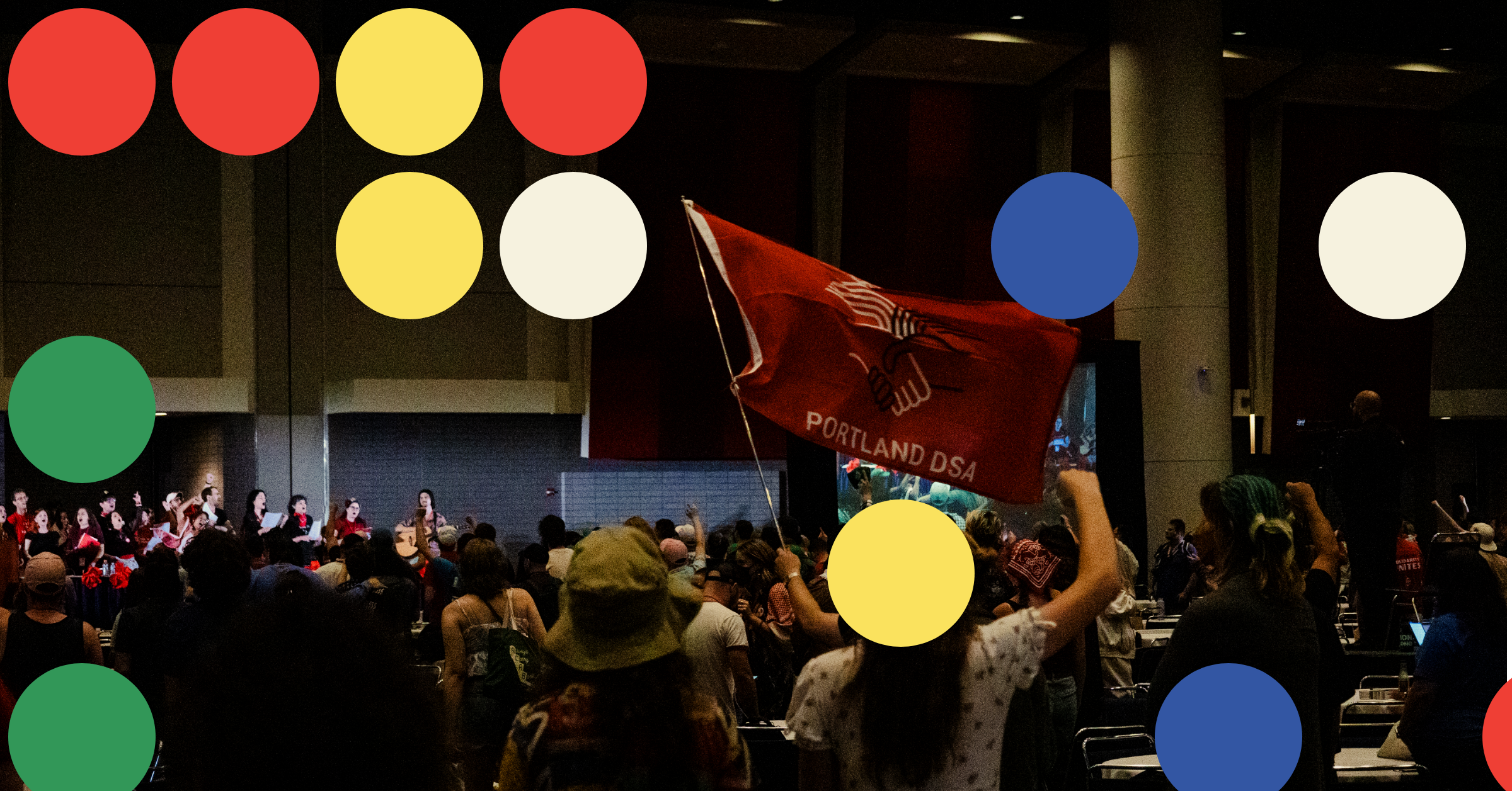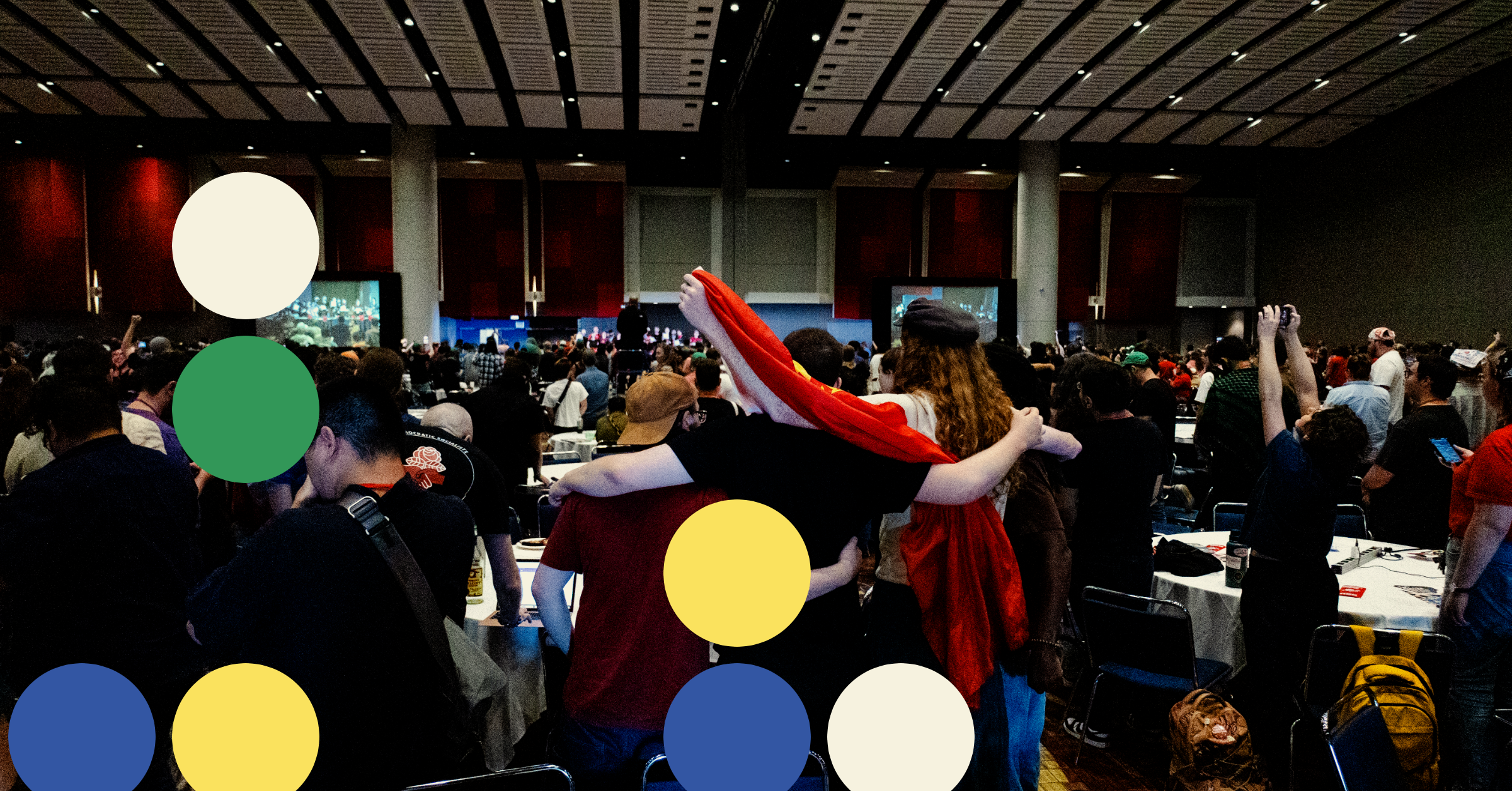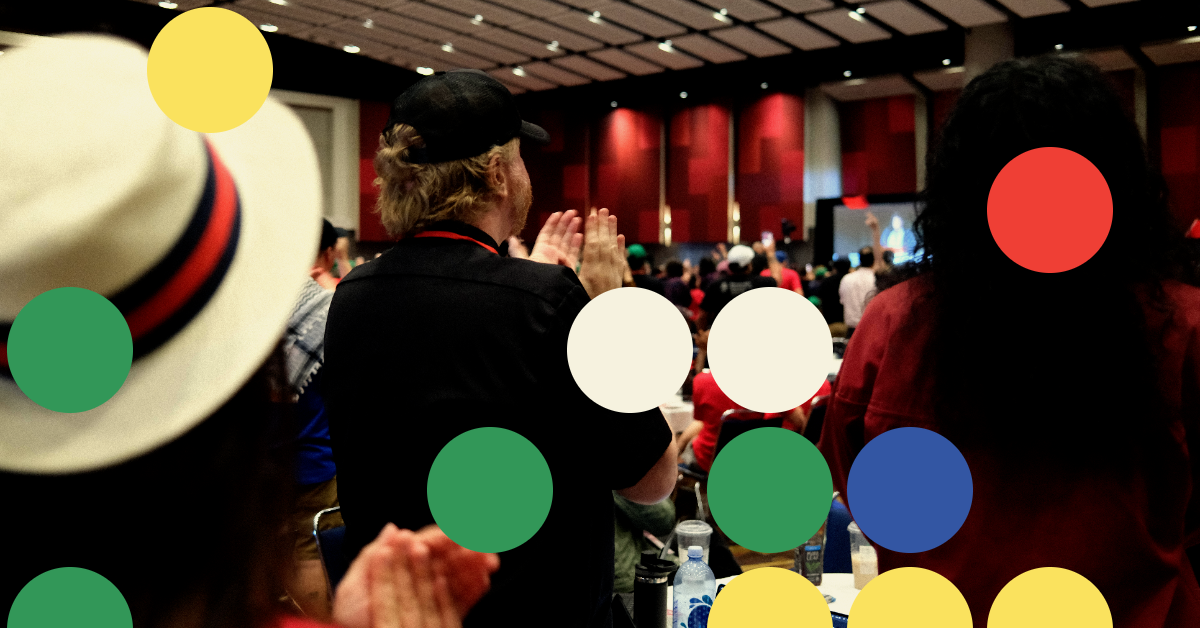The democratic socialist electoral project faces concerns and challenges in the wake of recent defeats of DSA-backed representatives Cori Bush and Jamaal Bowman, and our gradual dealignment with other progressive politicians like Alexandria Ocasio-Cortez. Socialists contest elections as a means to popularize our message and organize people. Winning elections has benefits: a class struggle candidate winning an election can help spur further organizing that does not just fight for legislative victories, but can be harnessed towards non-electoral organizing in communities and workplaces. Overcoming our current electoral obstacles is vital to rebuilding momentum for the socialist movement.
Despite low turnout plaguing the US electoral process, elections are the most popular way in which people engage with “politics” in the United States. To seize on that platform socialists have tried a variety of approaches. Some have worked within the Democratic Party to realign it towards the left. Others have formed independent parties that contest elections up and down the ballot (like the Socialist Party of Eugene Debs) or at the Presidential level every four years (like several small socialist parties today).
In 2016, Seth Ackerman laid out “A Blueprint for a New Party,” which navigates between those poles by proposing a membership organization which functions for all intents and purposes as a political party would anywhere else in the world, but in which “the ballot line would thus be regarded as a secondary issue.” It is striking how similar today’s Democratic Socialists of America is to the party that Ackerman theorizes. This shouldn’t come as much of a surprise, as the article was published in the midst of DSA’s rebirth following Bernie Sanders’ 2016 campaign and Donald Trump’s election as president.
How Does DSA Measure Up to the Ackerman Model?
The Ackerman model was influential to DSA’s subsequent electoral strategy, but different formulations of that strategy have differed on the key strategic questions left unanswered by his original proposal. How does DSA stack up against the type of organization that Ackerman describes in his article?
On some measures, DSA easily meets the mark: we are a national level organization with chapters in nearly every state and we are running candidates at different levels of office. We are registered as a 501c4 organization, allowing us to spend money on politics while retaining an organizational status separate from a legally recognized “party.”
On other metrics, DSA’s progress is mixed. While we do elect a visible national leadership in co-chairs and have an educational apparatus, these are underdeveloped, new endeavors for DSA. We have a program, but it’s not binding and there has yet to be an effort to get our candidates to appear under a visually unifying label.
The steps forward taken in the launch of DSA’s 2024 program, Workers Deserve More, should be welcomed as progress towards the kind of party that Ackerman describes. The program is not binding on candidates however and it is unclear what the relationship is between the organizing behind that effort and DSA’s electoral apparatus, which is underdeveloped and disorganized.
The Conditions of a Socialist Party
We need to refine the Ackerman blueprint into a model which we could imagine DSA following going forward. Here are six basic conditions for any formation to be considered a viable socialist party:
1. It should be socialist.
This is the easiest metric to meet in name but one of the hardest to define in practice. Many parties across the world are “socialist,” but that self-proclaimed socialism might not stick forever. We should define this by not only using the term socialist in a vague sense, but advocating for a program that calls for worker control of economic and political systems, and offers an agitational challenge to the power of the capitalist class.
2. It should be democratic.
Much like the first metric, many parties which claim the mantle of democracy are anything but democratic. The Ackerman blueprint lays out an analysis of why the Democratic Party isn’t worthy of the label We want a party where workers can join as members with democratic rights to elect leaders, organize internally for their perspectives, and where rank-and-file members can influence and participate in the strategic direction of the party. This should carry over into the state, as the party advocates for economic and political democracy in both political principle and policy.
3. It should be rooted in the working class.
A major issue for the current socialist movement is its concentration in specific sectors in the working class. While there are contradictions to be overcome in terms of intra-class conflict, a focus on shop floor organizing, rank-and-file-led workplace actions, and reforms to our labor unions offers hope that socialists can create the conditions that help move more workers to our politics. Social movements, tenants unions, and student organizing offer more opportunities to broaden the social base for a socialist party, which should offer engagement as a political vehicle for agitational political movements.
4. It should practice political independence.
Ackerman argued for moving past ballot lines as a central focus, preferring to avoid timesinks like ballot-access lawsuits. The alternative is flexibility and experimentation: running in Democratic primaries when this makes tactical sense, running on independent ballot lines in other cases, or targeting nonpartisan elections as a priority. This should extend itself to operational independence as well. An over-reliance on the ecosystem of NGOs and donors aligned with the Democratic Party would create a chilling effect on the ability of a socialist party to act in confrontational ways. Having the ability to run self-sustaining campaigns is vital for presenting a new option for political power.
5. It should be able to win.
There is no point in creating an additional fringe party which cannot win elections, let alone build a revolutionary movement. We have enough of these already — the Green Party, Party for Socialism and Liberation, and more all exist as independent formations. Without a popular base in the working class, a new party would be doomed to the same fate. This does not mean sacrificing other conditions in exchange for success, but invites the contradiction of needing to meet those conditions in order to defeat entrenched political interests.
6. It should have suitable party infrastructure.
The political vehicle we are creating should act like an independent party. That means adopting a minimal program that candidates are bound to, policy and strategic support for both campaigns and elected officials, and access to technical tools, fundraising, and trainings to develop to carry out the functions of a party.
How Do We Get DSA Into Party Formation?
One part of creating a party from the existing DSA structure is to build durable ties between our organization and external movements in the working class. This requires stronger ties from the bottom-up in the labor movement: by prioritizing rank-and file-workers we can bring socialists into the labor movement to help rebuild and transform it, and also put us into contact with workers who by struggling alongside us can form a connection to our political aims. Building a popular base for socialism in our workplaces will pay off in unions sufficiently democratic to translate that into working-class, socialist politics. If we participate in elections because that’s where the people are, then engaging in rank-and-file shop floor organizing is necessary too.
The same applies to social movements in support of Palestine, climate action, racial justice, queer liberation, and more. There are compelling arguments for DSA to take such an approach with the housing justice movement, and in particular formations like tenants unions. This requires DSA to rethink how we consider issue campaigns. Rather than permanent structures in alliance with professionalized nonprofits that work inside our political system via lobbying, how can we connect our organization to fights that engage more of the working class? And where such energy doesn’t exist, how can we intervene to create conditions to develop movements for demands like Medicare for All?
The answer to these questions lies in how we organize ourselves internally and how we project ourselves externally. By embracing core demands of the working class, prioritizing those which DSA and movements of workers can use to expose contradictions in our capitalist system, we are driving a wedge between those who want our demands and the system which denies them. This will require more sophisticated communications of our message and the coordinated rollout of the 2024 program should be a model for how DSA operates. We should align our elected leaders (especially the DSA co-chairs) behind unified messaging that the big tent of DSA can all support. Our endorsed candidates should be championing our program too.
The National Electoral Commission (NEC) should think about this party building project as we consider which tasks to prioritize as we expand our membership body. Almost everybody agrees that DSA should prioritize “cadre candidates”, but we have stretched that definition to its limits. A cadre candidate is someone who has been deeply involved in DSA and is running for office as an extension of the organization’s electoral strategy, usually based on decisions made by their chapter in terms of what to prioritize. We should reserve national endorsements for candidates aligned with this model and assist chapters with building the infrastructure necessary to carry out such campaigns.
DSA currently endorses too many candidates nationally to have significant impacts on individual elections. The endorsement that matters the most in a material sense now is the chapter. The NEC could coordinate fundraising and phonebanks for our priority candidates and we carry out programs such as candidate schools and campaign staff trainings (like the Louisville DSA Electoral Academy) to help us operate campaigns where candidates and staff are powered by DSA and not reliant on outside interests with competing motives. These campaigns have the power to not just win elections, but build the strength of our party. When a candidate wins, their supporters should know they have voted for a democratic socialist and that there is an organization to join for continued work.
The NEC can push the envelope on actual infrastructure to assist chapters, campaigns, and elected officials like an independent party would. Coordinating electeds with members who have knowledge about policies into a national “policy shop” would build infrastructure for electeds to rely on as they navigate the job of serving in office — and allow them to avoid relying on establishment venues who would not support the development of socialist proposals. We should explore what technical tools (like a shared fundraising platform) could be developed for DSA candidates to ensure that our endorsements come with advantages that would be typically provided by being a member of Democratic campaign committees.
The most important piece of the missing party infrastructure for DSA is an apparatus to raise the funds necessary to sustain our electoral project. Currently the only significant fundraising effort for our endorsed campaigns is a tandem ActBlue form that is rarely publicized. We can reinvigorate that as a fundraising apparatus, but it’s not enough. Our direct grant program is good for ballot measures and some candidate campaigns in states with certain laws, but in most states our spending will be limited unless DSA is able to help coordinate the launch of PACs on a state by state basis. Some chapters, like Chicago DSA, have launched PACs and the lessons from these experiments will help determine how we can raise the money we need to take on big money opponents like real estate developers and AIPAC.
What About the Ballot Line?
A key element of the Ackerman party model was a de-emphasis of ballot line considerations. This has inspired a status quo in DSA that despite affirmations that we should “experiment” with independent ballot lines where viable, we don’t do much of that. It’s unlikely that the Democratic Party will be the vehicle to build a durable working class majority for socialist politics, so independent experimentation is a missing element in our strategy that we should be embracing now. We are no longer in the days of 2015-20 where growth was fueled by Bernie Sanders presidential campaigns.
Sanders’ earlier career offers a more compelling model for DSA’s experimentation in independent politics. Sanders ran and lost several statewide elections before breaking through in 1990. We are going to lose some elections in Democratic primaries and outside them, so how we run and build DSA through those campaigns is the key to making sure such experiments are additive rather than disruptive. Sanders helped inspire efforts like the Vermont Progressive Party, but avoided getting involved in organization-building, leaving an institutional gap that a socialist party should fill. DSA’s task now is to fill that gap and build a new party for the working class.




